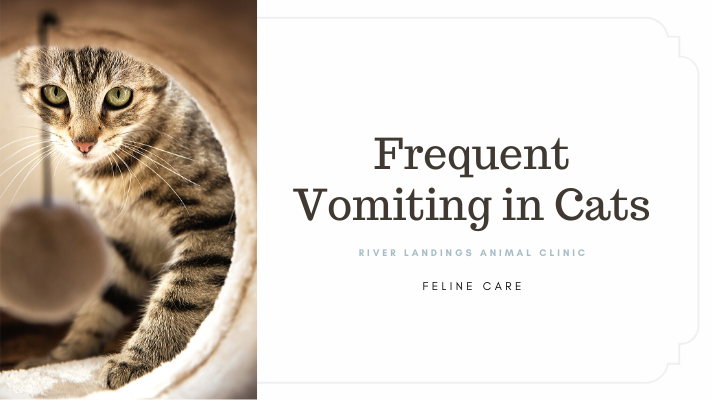It’s amazing (yet scary) how many common food items in our kitchen are poisonous to our pets! Some of these food items, while safe to you, may cause serious problems if ingested by our dogs and cats. Here is the list of kitchen products that the veterinarians at Pet Poison Helpline recommend keeping away from pets.
Chocolate
Chocolate comes in many different forms, such as: white, dark, milk, semi-sweet, baker’s and cocoa powder. Each type of chocolate has a different toxicity level. Baker’s, cocoa, dark and semi-sweet chocolates are toxic in much smaller amounts than milk or white chocolate due to the greater concentration of theobromine and caffeine. A mild toxic dose of chocolate can cause agitation/hyperactivity, vomiting and diarrhea. Moderate toxicity can cause tachycardia (increased heart rate) and severe toxic levels can cause seizures. Chocolate stays in the stomach for several hours after ingestion, so symptoms may not show for up to 12 hours after ingestion. Chocolate stays in the system for a long period of time, so if symptoms occur, they can last potentially 72-96 hours.
Xylitol (common in sugar-free chewing gum)
Xylitol is a sugar alcohol and is gaining popularity in sugar-free foods, oral care products, and dietary supplements. Common products that contain xylitol are gum, toothpaste, sugar-free candy, chewable vitamins, and melatonin supplements. It is also sold in bulk for baking. Although safe for humans, xylitol can cause hypoglycemia (low blood sugar) and liver failure in dogs that ingest toxic amounts. The symptoms can be very rapid, occurring within 30 minutes to 2 hours after ingestion. Common symptoms of xylitol poisoning include vomiting, weakness, lethargy, difficulty walking (ataxia) and seizures. Dogs are the most susceptible pet species to xylitol toxicity.
Grapes / raisins / currants
Grapes, raisins and toxic currants (Vitis species) can cause acute kidney failure in dogs. There is no known toxic dose for these fruits so any ingestion should be considered potentially toxic. Common symptoms include vomiting, diarrhea, lethargy, anorexia (not eating), weakness, and decreased urine output. Symptoms show within 12-24 hours.
Caffeine
Caffeine poisoning, while not as common as chocolate poisoning, can occur with ingestion of products such as coffee, tea, chocolate, certain drugs such as migraine medications, and caffeine or diet pills. Caffeine poisoning can cause restlessness, hyperactivity, vomiting, panting, tachycardia (increased heart rate), weakness, diarrhea, and heart symptoms can occur 1-2 hours after ingestion and can last for 12-36 hours. Fatality is common when dogs ingest caffeine pills.
Fatty scraps
While it is tempting to feed your pet scraps from the table, fatty food scraps can cause stomach upset and is a risk for pancreatitis in pets. Pancreatitis is a condition where the pancreas becomes inflamed. Symptoms of pancreatitis include vomiting, abdominal pain, loss of appetite (anorexia), lethargy, and diarrhea. Some dog breeds are more prone to pancreatitis such as miniature schnauzers, miniature poodles, and cocker spaniels. Older and overweight dogs can also be prone to pancreatitis, but with an ingestion of fatty foods, any dog can be susceptible.
Onions / garlic / chives / leeks / shallots
Ingestion of these foods in large enough quantities can cause oxidative hemolysis, which is defined as the destruction of the red blood cells, causing anemia. Common symptoms of toxicity can include but are not limited to: lethargy, pale mucous membranes, abdominal pain, vomiting, diarrhea, increased heart rate, and increased breathing rate. The onset of symptoms can be anywhere from 24 hours after ingestion to several days. The symptoms can potentially last for 10-20 days. Dogs, cats, cattle and horses can be affected.
Macadamia nuts
Macadamia nuts are a common snack for people but can be toxic to dogs. Macadamia nuts contain up to 80% oil and 4% sugar which can increase the risk for pancreatitis (high fat). In toxic quantities, the nuts can also cause neurological signs such as weakness, ataxia (difficulty walking), tremors, hyperthermia (increased temperature), and joint stiffness. Symptoms of neurological poisoning can be witnessed within 3-6 hours and can last for 24-36 hours. Dog breeds more predisposed to pancreatitis (e.g., miniature schnauzers, miniature poodles, cocker spaniels, obese dogs, etc.) may be at higher risk but all dogs may be susceptible to pancreatitis.
Unbaked yeast bread dough
Any bread made with baker’s yeast can be toxic if the unbaked bread dough is ingested. When bread dough is rising, the yeast consumes sugars in the dough and in turn produces ethanol and carbon dioxide. The carbon dioxide forms bubbles in the dough making it rise. Ingestion can cause ethanol (alcohol) toxicity as well as obstruction of the stomach, stomach bloat and/or stomach torsion. Common symptoms from ethanol toxicity include acting “drunk”, sedation, ataxia (difficulty walking), hypoglycemia (low blood sugar), hypothermia (low temperature), GI distress, respiratory depression, and coma. Bloat and stomach torsion are more common in deep-chested dog breeds such as the Great Dane, German Shepherd, Irish Setter, Gordon Setter, Weimaraner, Saint Bernard, Standard Poodle, and Bassett Hound, however, any breed of dog could be at risk. Common symptoms of bloat include abdominal distension, pawing, restlessness, and unproductive retching. Symptoms can occur one hour after ingestion but can be delayed. Symptoms can last 24-36 hours and surgical intervention may be needed to remove the dough.
Alcohol
Alcohol or ethanol toxicity can occur when an animal ingests alcoholic beverages, alcohol-based hand sanitizer, yeast bread dough, etc. Common symptoms from ethanol toxicity include acting “drunk”, sedation, ataxia (difficulty walking), hypoglycemia (low blood sugar), hypothermia (low temperature), GI distress, respiratory depression, and coma. Symptoms have a rapid onset, within 30 – 90 minutes, and can last 24-36 hours.
Table salt
Ingestion of salt can cause sodium poisoning (hypernatremia). Hypernatremia is an increase of sodium concentrations in the blood. Common symptoms of salt toxicity include vomiting, diarrhea, polydipsia (increased drinking/thirst), ataxia (difficulty walking), tremors, and seizures. Symptoms can occur within 30 minutes to 4 hours. Animals can also be at risk for salt toxicity when they ingest homemade play-doh, salt ornaments, baking soda, de-icing products, and other salt-containing products.
Even with the best planning and intentions, our pets will occasionally be exposed to toxic substances in the kitchen. If you suspect your pet has had a toxic exposure call your veterinarian or Pet Poison Helpline immediately as time is of the essence. It is not always safe to induce vomiting or administer other home remedies. Seek counsel before taking action.
Hear From Us Again
Don't forget to subscribe to our email newsletter for more recipes, articles, and clinic updates delivered straight to your e-mail inbox.
















